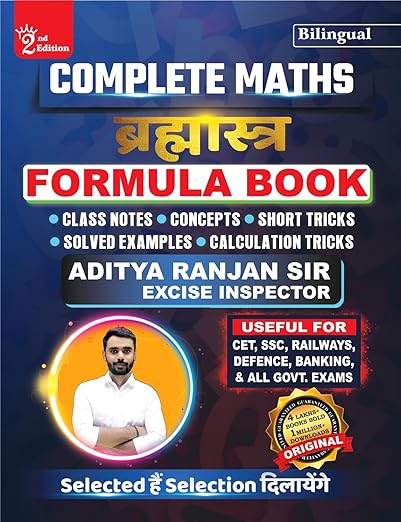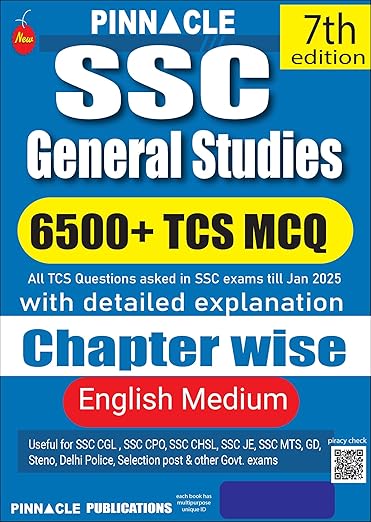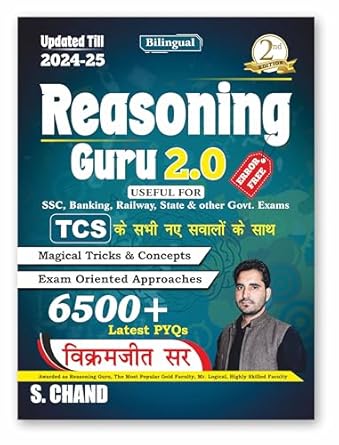- Intelligence and Problem
- Steps for Solving Problems
- Concept Formation
- Problem Solving Experiences
- Cognition and Emotions
- Emotions
Child as a Problem Solver - Syllabus and Study Material
Problem Solving
Problem solving is an important kind of thinking. In general, a problem is any conflict or difference between one situation and another we wish to produce- the goal. Many instances of problem solving can be considered a form of information processing. Many rules are used in solving problems, of them the two major types of rules are – algorithms and heuristics. Algorithms are sets of rules which, if followed correctly, guarantee a solution to a problem. For example, if a person is given two numbers to multiply, he immediately starts thinking of all the rules for multiplications he has learned, and he applies algorithms to the problem. If he follows the rule correctly, he will solve the problem. On the other hand, heuristics are strategies, or approaches, to a problem that are usually based on past experience, likely to lead to asolution, but do not guarantee success. One common heuristic is breaking a larger problem down into smaller subproblem which, when solved, will lead to the solution of the overall, large problem.
Problem solution depends, to large degree, on choosing good heuristic rules to follow. Practice in solving problems in once way tends to give a person, a set to use the same rules on other problems. It has both positive “and negative effects. Habit and set can predispose us to select appropriate or inappropriate heuristics. A set that points in the wrong directions is called functional fixedness. Functional fixedness is an example of the hindering effects of habit and set on problem solving. Decision making is a kind of problem solving in which we are presented with several alternatives among which we must choose. One idea about decision making is that people use subjective probability. They are trying to optimize utility in making their decisions. In considering the decisions, the different people assign different utilities to the same event. Most decisions are risky in the sense that we cannot be sure of the outcome. We will simplify the decision by using heuristics. While useful, these rules can also lead to biases and errors in making decisions. Among the decision-making heuristics are representativeness, availability and adjustment.
Improving Problem Solving Skills: Limitations in problem solving can be addressed in various ways. Pictures or Venn diagrams help solve syllogistic reasoning problems. Training can eliminate some biases. Incubation and decomposition are two strategies that can aid problem solving. Experts are superior to novices in problem solving because of their knowledge and experience. They can draw on knowledge of similar problems, visualise related components of a problem as a single chunk, and perceive relations among problems in terms of underlying principles rather than surface features. However, expertise can also prevent the expert from seeing problems in new ways.
Are intelligence and problem-solving ability the same thing?
Common sense can make the point that brighter people are better problems solvers than dull ones. Experimental studies on the subject can give us a fuller account of the precise rule of intelligence in the problem - solving process. There is evidence, for example, that intelligence can influence our perceptions and consequently, our problem-solving ability. There is also evidence that the strength of mental sets and susceptibility to mental sets are both influenced by the individual’s intelligence – with lower intelligence generally associated with strong mental sets and with greater susceptibility to mental sets. But the role of intelligence is probably far more complicated than we can indicate here. For one thing, there is the question raised a little earlier, about the possibility of treating problem solving as a skill which can be taught and therefore, learned, with the same teaching methods, some individuals (the more intelligent?) will doubtlessly learn faster than others and develop their productive thinking to higher levels. Related to this is the whole question of whether intelligence is a “given” of the individual, or whether (and to what degree) it can be influenced by general experience and directed teaching.
Finally, an individual’s knowledge makes a great deal of difference to his problem-solving ability, but the relation between knowledge and intelligence is by no means a simple one.
A person’s problem-solving ability is determined by both situational and personal factors. The situational factors derive from the actual nature of the problem as well as the emotional and motivational states and the mental sets temporarily induced in the problem solved by the problem. The spatial arrangement of the objects involved in a problem is one situational factor derived from the actual nature of the problem which can help or hinder its solution. This factor or principles follows from one of the perceptual generalizations of the Gestaltists – that spatial arrangement of stimuli affect visual perception. A special case of this factor occurs when we find it difficult to divorce the meaning of an object from its usual function. This is called functional fixity.
Another situational factor in problem solving follows from the perceptual generalizations of proximity and similarity and helps explain how we arrive at cause-and-effect conclusion – often erroneously. This is exemplified in our tendency to ascribe a causal relation between two events all we have observed is a correlation.
A third situational factor refers to the amount of information provided by the problem situation. Too little information makes problem solving difficult; too much information (particularly if it is irrelevant) produces mental dazzle and hinders problem solving.
The final two factors refer to temporary states induced in the problem solver. Success in solving problems by a certain method can induce a mental set which traps the problem solver into using that method even when it is not efficient. One way of breaking a mental set is to turn away from the problem for a while. Emotional and motivational states brought on by the problem can influence the problem solver, making him either more or less effective. Too little motivation, naturally, hinders problem solving, but motivation that is too strong can also can lead to poor performance.
Steps for Solving Problems
- Defining the problem
- Working on the problem
- Coming to conclusion
- Carrying out the conclusion
- Learning.
Learning to Learn in Problem Solving
When we want to get from one place to another in strange surroundings, without a map we have two choices. We many go exploring using our sense of direction or some other past experience and perceptions, which will limit our blind trial and error; or we may ask someone for directions. In the first instance our strategies come from within; in the second, we have to evaluate outside sources of information. In neither case are we behaving completely at random.
Much human reasoning is combined with motor activities in real and useful ways; at other times it is an armchair occupation, where the person may sit quietly with eyes closed and finally emerge with the answer to a problem. Reasoning follows a sequence or pattern:
- Awareness of problem or difficulty
- Recall or observation of significant facts
- Suggestions for possible solutions or explanations
- The evaluation of these suggestions
- The acceptance or rejection of a proposed solution.

The range of teaching-and-learning activities in the classroom runs from memorization and repetition all the way to solving problems and thinking creatively.
![]()
In our classrooms, we can look for ways to address this entire range. For example, we can:
Use blocks, Models, and other objects to teach mathematics, which taps into children’s fine motor skills and their visual understanding;
Invite children to talk about (or write about) ideas and process in mathematics, Which links their verbal thinking to understanding mathematics concepts,
Ask children to draw pictures for the stories that we read to them, which connects their visual thinking to the words and events in the story; and
Guide children in making maps of the area around school, which links their experience of movement in space to visual and mathematical concepts. When children survey their community, identify problems within it, and use their skills cooperatively to suggest solutions to these problems, they are learning how to apply what they learn in school. A part from imparting good education, this process helps the community to understand the work of the school, and they may be more motivated to support the work of teachers.
For your classroom to be fully inclusive, you need to make sure that the curriculum is accessible to and relevant for all children in terms of what you teach (content), how you teach it, how the children learn best (process), and how it relates to the environment in which the children are living and learning.
Problem Solving Experiences
Perceptions, images, and symbols are mental elements that make up our problem-solving experience. Images include both memory images and created or fantasied images. Symbols, which represent various aspects of reality, include words; letters, numbers, mathematical expressions, and so on. People differ in their imagery, both in its vividness and in its predomination mode – auditory, visual, and so forth. A visual image that is as detailed and vivid as an actual perception is called an eidetic image. But most images are less clearly experience than perceptions. Images are also more changeable and pliable; perceptions more Gxed.
The traditional question of whether or not there is imageless thought has now been rephrased to ask whether the presence or absence of images makes a difference in how we think. It seems, from current research, that those who report a great deal of imagery think in a somewhat different way from those who report little or,no. Imagery. A number of practical implications fol - iow. Those with little visual imagery, for example, find visual aids of little help.
Cognition and Emotions
Cognition Means “knowing,” It is related to our perception of the world about us, and to the things we learn, subjects we have already covered in previous chapters. Cognition also includes thinking, problem solving, concept formation, and the processing of information to obtain judgments and decisions. For some people, life seems to be a series of incidents that proceed without meaning; only occasionally do these incidents apparently blend to become events of significance. But for the sophisticated person, life is like a search through an ideational maze, an unending attempt to understand and to be understood.
No we shall describe the process of thinking and solving problems. Then follows a chapter on concept formation and creativity. The third chapter of this section on cognitive processes covers the practical aspects of processing information and using the computer in decisions. Thinking is a problem-solving process in which we use ideas or symbols in place of overt activity. It varies from the use of motor trial and error to the use of mental images and previously programmed rules. As an Illustration, let us consider three chess players, each of whom is engaged in trying to solve the same chess problem. The first player is handicapped in being able to imaging only one move ahead. He asks and gets permission from his opponent to move the pieces around physically before he settles on his permanent move. He moves several pieces in succession until he sees that his attack is unsuccessful. Then he returns the chess men to their original position and tries a new sequence of operations. After several such efforts he eventually hits upon the combination of moves that gives the desired result, and his task is completed.
This problem solving involved both ideas and motor manipulation.
The second chess player sits before the board and surveys the situation. He scowls, grunts, or makes some incipient gestures. Then, after several minutes of contemplative activity, he touches the pieces for the first time and moves them rapidly and precisely to their correct places. This second player has not been idle; he has been “Thinking,” and he has arrived at a solution as good as that which he could have attained by trying all the moves overtly.
Our third chess player has been using a computer to “extend” his memory and decision making by providing himself with previously worked out rules for choices and thereby cutting down on trial and error: “If the opponent makes move A, then avoid making moves D, E, and F, and choose either G or H. If the opponent makes move B, then respond with move L; if he makes move C instead, then follow with move M – etc., Etc.” This third player has made use of previous thinking now stored in the computer.
Cognition relates to our perception of the world about us, and to the things we learn. It also includes thinking, problem solving concept formation, and the processing of information to obtain judgments and decisions. Thinking is a problem-solving process in which we use ideas or symbols in place of overt activity. It various from the use of motor trial and error to the use of mental images and previously programmed rules.
Thinking involves the mental manipulation of information represented in long-term and short-term memory. Concepts are the basic units of thought. The raw materials of thought may also take the form of propositions, which are assertions that state how two or more concepts are related. Language involves the ability to use a rich set of symbols, plus rules for combining these, to communicate information. It includes the abilities to produce and to comprehend speech.
Concept Formation
Concepts are in important class of language symbols used in thinking. A concept is asymbolic construction representing some common and general features of objects or events. The term concept describes a class or category that includes some number of individuals or subtypes. An example is dog, which includes various kinds of dogs from Alsatian to Greyhound. Other concepts designate qualities or dimensions. Examples are length and age. Still other concepts are relational, such as ‘taller than.’ It is important that relational concepts do not apply to any one item in isolation. Concepts are what we generally think about.
Concepts arise in two contrasting ways, which can be characterized as bottom-up versus top-down. Bottom-up category involves the detection of multiple correlated properties that make the instances of the category stand out as a natural class distinct from other categories. In contrast with bottom-up concept formation, the top-down variety is more directly triggered by the goals of the learner. One major type of goal is explanation. The Newtonian concept of gravity, for example, was generated in the process of explaining regularities in the motion of physical objects. Gravity is inherently an abstraction, postulated because it plays a role in an explanatory theory. Other concepts are induced because they capture aspects of situations important to goal attainment. The development of concepts requires two processes, abstracting and generalizing. These two processes cannot be separated clearly. Abstracting is observing the similarity of otherwise different things. But in thinking, we combine concepts in various and sometimes complex ways. One means of combination, is association – a sense of “this goes with that.” But associative links between concepts may be inadequate. Many philosophers have argued, therefore that our thoughts take the form of propositions. These are statements that relate a subject and a predicate. Propositions can be true or false.




0 Comments